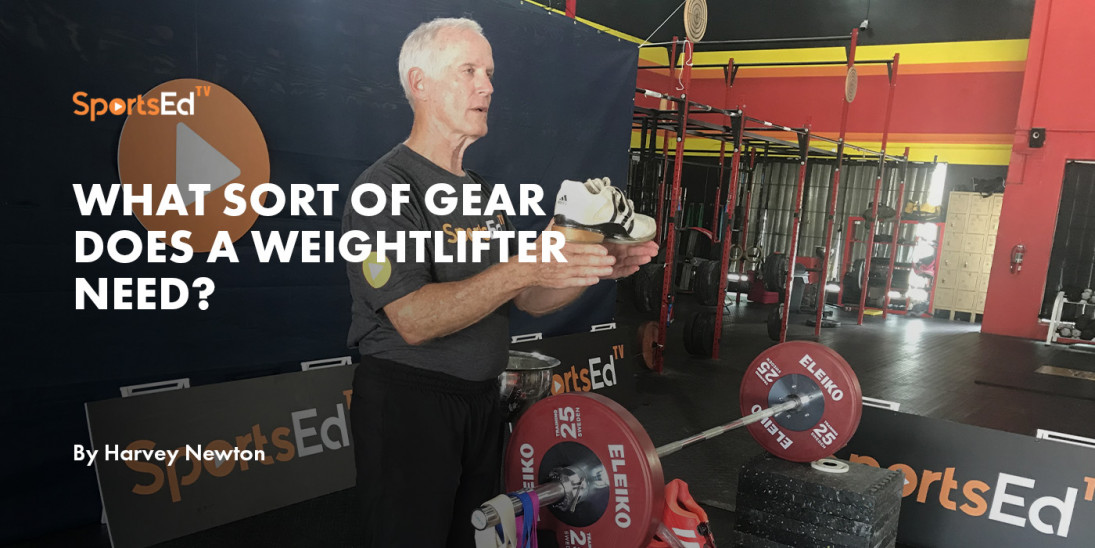Cycling
Welcome and thanks for visiting...

Seven Common Weightroom Errors Cyclist Often Make Part IV

Harvey Newton, SportsEdTV’s director for weightlifting, has been an avid cyclist for many years, including years of masters’ racing. Years ago, USA Cycling requested Coach Newton develop educational materials to further cyclists’ knowledge of off-bike training. This was later updated to the Strength Training for Cyclists System (since “retired”) that included revisions, expansions, and improvements. Through a series of weekly blogs, Coach Newton shares key information with SportsEdTV viewers.
For cyclists in the Northern Hemisphere, this time of year is the offseason. Cycling intensity and volume are reduced, off-bike training (cross-training) ramps up, with riders aiming for improved performance in the next race season. Part of this work includes weight training. Proper weight training helps improve strength and power, and it can improve injury prevention. But all too often, cyclists fail to optimize the benefits of weightroom work.
From my small booklet, How to Avoid Seven Weightroom Errors, I will cover weekly these challenges. Check here for other cycling blogs in this series and others.
Common Error #4
Using ineffective training programs.
Cyclists usually say the reason they resistance train is to get stronger. You’ll get no argument from me on this, as added strength is the main benefit of a scientifically designed resistance training program. But why do riders continue to fail to follow programs that assure gains in strength?
Most cyclists (and other endurance athletes) are paranoid that if they lift heavier weights for fewer repetitions (more intense effort), they will balloon up to Mr. Universe-size. Women in particular seem especially concerned that they will “bulk up.” So they train with lighter weights, perform higher repetitions (see Common Error #2), and fail to get stronger.
In order to gain strength (and as a result, increase your power), first you need to test strength levels post-racing season. You then need to aim to specifically improve your strength and power by the end of your serious strength training program and maintain this strength into the racing season.
There’s a time to lift lighter weights for a greater number of repetitions (but this will NOT get you stronger). To gain strength, you have to increase the intensity, just like on the bike. Strength training stretches across a continuum, just like your cycling training. A good training program takes into consideration all of the possible benefits of resistance training, bringing you to a peak at the right time.
Keep a logbook or diary and track of your personal records in most lifts. More importantly, regularly move up your personal bests to the next level. Don’t accept plateaus. Plateaus occur when your body adapts to the load (or stressors) being thrown at it.
If you want to read the “bible” on which modern training methods are based and what happens at the cellular level in your body, check out The Stress of Life, by Hans Salye, M.D. Modern sports training is largely modeled after Salye’s General Adaptation Syndrome, a common sense approach applied by informed coaches.
If you’re not getting the results you want (be sure you’ve clearly defined these), look at your training program. Are you doing the same exercises, with the same weights, reps, and sets as a month or two ago? Would your cycling be any better if you rode the same route, at the same pace, using the same gears, for the same duration, day in and day out?
Read more:
Seven Common Weightroom Errors Cyclists Often Make Part I
Seven Common Weightroom Errors Cyclists Often Make Part II
Seven Common Weightroom Errors Cyclists Often Make Part III
Seven Common Weightroom Errors Cyclists Often Make Part IV
Seven Common Weightroom Errors Cyclists Often Make Part V
Seven Common Weightroom Errors Cyclists Often Make Part VI
Seven Common Weightroom Errors Cyclists Often Make Part VII (Final)





